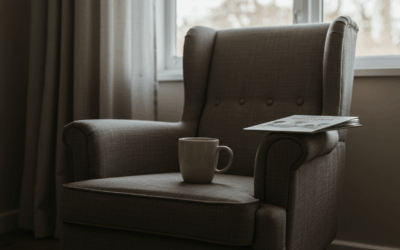A peaceful home doesn’t happen by accident — it’s shaped by the rhythms and habits we live out every day. Creating a thoughtful family routine can reduce stress, increase connection, and support everyone’s mental and emotional well-being. And it doesn’t have to be complicated. A few intentional changes can help the whole household feel more grounded and resilient, especially during busy or stressful seasons.
Here’s how to build a family routine that supports mental wellness — with practical steps you can start implementing today.
Start with Structure, Not Strictness
Kids and adults alike thrive on predictability. Knowing what comes next reduces anxiety and helps everyone feel more in control. But structure doesn’t mean rigidity. The goal is a rhythm that brings calm, not pressure.
Some foundational elements to include:
- Consistent wake-up and sleep times
- Mealtimes together (even if it’s just breakfast)
- Tech-free family time (even 20 minutes counts)
- Built-in quiet time or solo play for decompression
Think of your routine as scaffolding, not a schedule. You’re creating a supportive framework that can flex as life happens.
Add Mindful Moments to Everyday Tasks
You don’t need to carve out extra time for mindfulness — you can layer it into what you’re already doing. For example:
- A few deep breaths before eating
- A short gratitude round during dinner (“What was the best part of your day?”)
- A minute of silence in the car before school or errands
- Calming music during cleanup time or transitions
These micro-moments are small but powerful ways to promote regulation, connection, and emotional safety.
Create Emotional Check-In Rituals
Kids often struggle to name or express how they feel — and adults aren’t always much better. Emotional check-ins build emotional intelligence and reduce the chances of outbursts or misunderstandings later.
Try:
- A daily “mood meter” or feelings chart
- Sharing one word to describe how you’re feeling each morning
- A bedtime routine that includes “one thing that made you feel happy, sad, or proud today”
Normalize talking about emotions. It’s one of the best tools for building long-term resilience.
Prioritize Transitions (They’re the Most Fragile Moments)
Many stressful moments at home happen during transitions — getting out the door, winding down at night, switching from screen time to homework. These in-between moments can be smoothed out with predictability and preparation.
A few ideas:
- Use visual schedules for younger kids
- Give five-minute warnings before changing activities
- Create “transition rituals” (a song for clean-up, a warm drink before bed, a silly countdown before leaving the house)
The more you soften the edges of the day, the more ease the whole family feels.
Protect Rest and Play Like Essentials (Because They Are)
Mental wellness isn’t built on productivity — it’s built on rest, connection, and joy. Make sure your routine protects the things that actually recharge your family:
- Unstructured play time
- Outside time
- Rest periods with no stimulation (even 15 minutes helps)
- Shared laughter — even if it’s just a funny video or a dance break
Don’t wait until someone’s overwhelmed to make space for rest. Build it in daily, like brushing your teeth or packing lunch.
Small Changes, Big Impact
A family routine rooted in mental wellness isn’t about perfection. It’s about making room for connection, calm, and emotional safety — day by day, choice by choice. Try one change this week. See how it feels. Adjust. Repeat.
Over time, these small moments will shape a home where everyone feels supported — not just physically, but mentally and emotionally too.















0 Comments